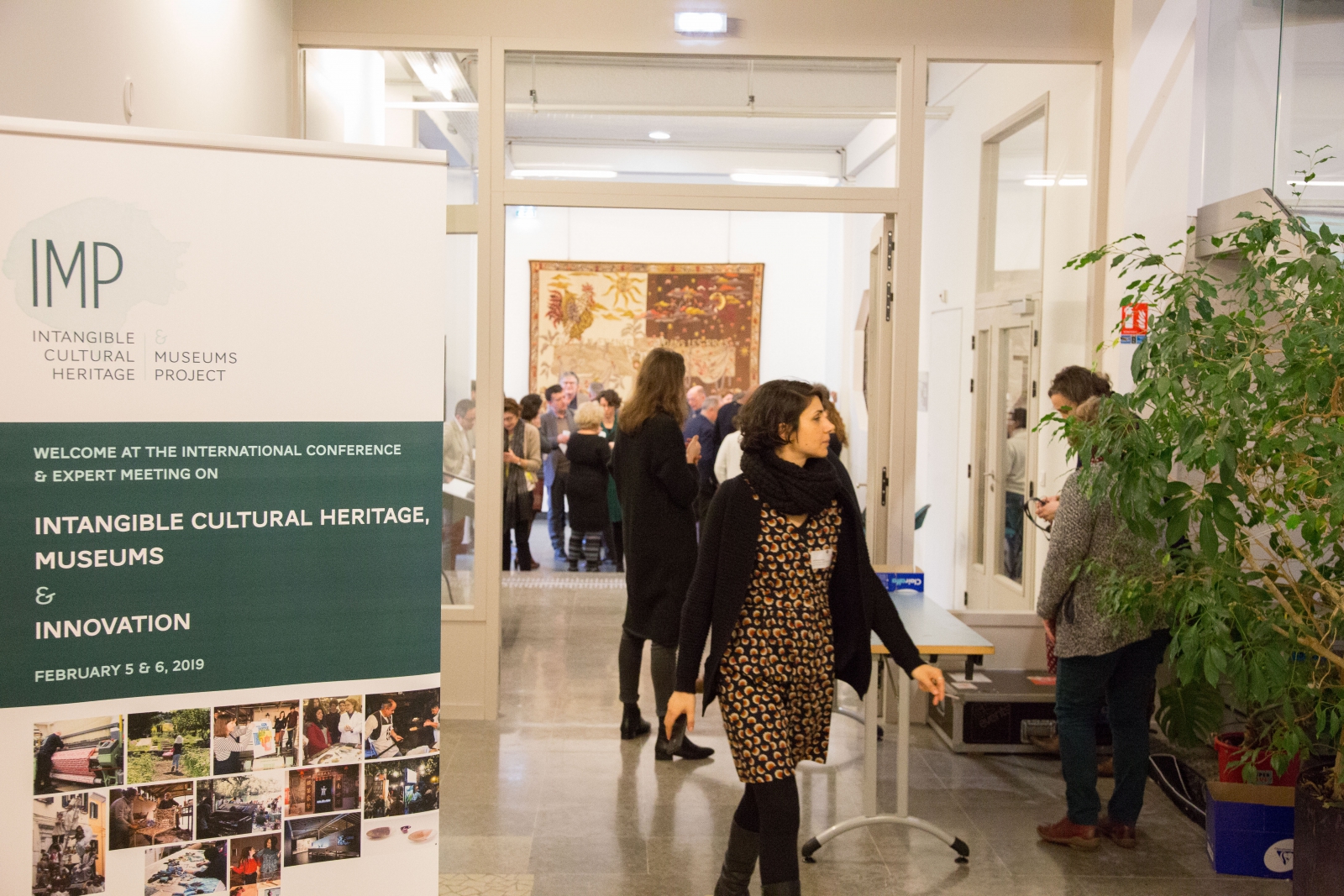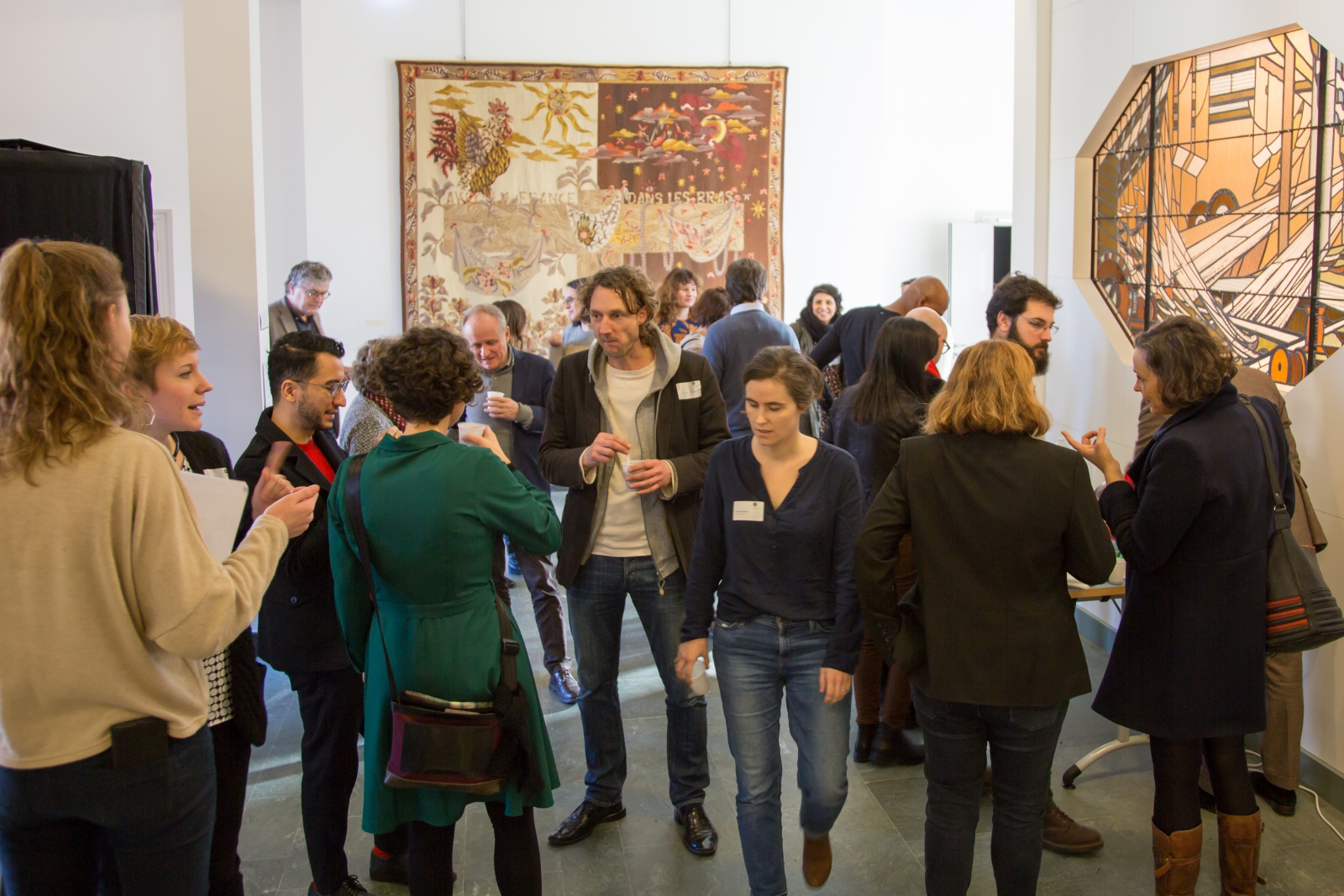Report of the Expert Meeting: Intangible Cultural Heritage, Museums and Innovation (6.2.2019, Aubusson)
Welcome
Emmanuel Gérard (Cité internationale de la tapisserie) again welcomed the participants to the Expert meeting on Intangible Cultural Heritage, Museums and Innovation, and started out with explaining how the Cité integrates intangible cultural heritage its work as a museum.
Position paper: ‘Museums and Intangible Cultural Heritage: new models for innovation.’
Francesca Cominelli (Université Paris 1 Panthéon-Sorbonne) presented the contents of the position paper she had written in the context of the Expert Meeting. Cominelli elaborated on the concepts of strong and weak ties, referring to the work of Granovetter. Granovetter relates the analysis of creativity and social networks and he distinguishes strong and weak ties. Strong ties are the result of frequent interaction, emotional involving, and are based on reciprocity. Weak ties are built through less frequent interactions, less emotional involving, and need less reciprocity. Strong ties are essentials for explaining relations within stable groups and organizations, while weak ties establish unexpected relations between groups or organizations and permit to access new information, that can incite innovation and creativity. In her presentation, Cominelle explores how ICH practices within a museum can contribute to create new ties, bringing together new practitioners, publics, ideas, skills... and could result in innovation.
Inspiring museum examples on intangible cultural heritage and innovation
During the next part of the Expert Meeting, another selection of museums from Belgium, The Netherlands, Switzerland and France were asked to present their work on intangible cultural heritage, linked to the topic of innovation:
|
Panel 1
This panel was moderated by Tamara Nikolić Đerić (Kulturbiro) |
|
Panel 2
This panel was moderated by Armande Cernuschi (Fourvière Fondation & France PCI) |
Workshop: Innovating the safeguarding of intangible cultural heritage together with museums
The participants to the Expert Meeting were asked to reflect about innovative approaches, in relation to museums and intangible cultural heritage, focussing on topics such as:
- visitors as participants
- communities as partner
- competitions and award to stimulate innovation
- surprising partnerships
- labs
What is innovative about these topics? How do they contribute to innovation or transformation in relation to intangible heritage and museums? And what are barriers? How else could these approaches be incorporated and have effect on safeguarding intangible heritage? The outcomes of the workshop will be reflected in the IMP-toolbox!
Some first insighs:
Labs are a good tool for safeguarding ICH, but be careful not to create disruption in the context of the community. Do not isolate the lab from potential impact in real life.
In establishing surprising partnerships, you need trust and confidence and a topic that is relevance in society, in order for the multiperspectivity of ICH to become obvious.
Iniviting visitors to be participants requires a new approach and perspective, involving the senses, or an intergenerational approach.
This session was facilitated by Jasper Visser (VISSCH+STAM)
Conclusions
Jean-Louis Tornatore (Centre Georges Chevrier, Université de Bourgogne) presented the conclusions of the Internation Conference & Expert Meeting on Feburary 5 and 6, 2019, insisting on the main questions European museums face today - and which should concern everyone working in the field of cultural patrimony (curators, researchers, practicians…): how can you increase visitors' involvement? How can you attract artists? How can you become a living institution? How can you renew your sources? How can you best leverage technological innovations?
He then re-examined two issues that he deemed to not have sufficiently been discussed during this international meeting:
- The economic matter: thanks to Boltanski’s book, JLT defined the « enrichment economy » which assimilates heritage to luxury products and to wealth. How does ICH fit into this model? He deeply regretted that ties between ICH and capitalism have only briefly been addressed. Cultural institutions have to think about possible ways to escape from capitalism in order to not succumb to the tentation of the territorial marketing which is incompatible by nature with the concept of ICH.
- The social matter: he believed that the place of inhabitants in museums and ICH projects, as well as the question of the habitability of the territories, should have been explored more in-depth during the exchange of experiences.
Having demonstrated that whilst ICH is a longstanding concept in the world of museums, it nevertheless remains very relevant, Jean-Louis Tornatore continued by stating that ICH is to heritage what the New Museology is to museums: ICH holds the possibility to widen the scope of patrimony in order to integrate social elements in the same way that the New Museology have made it possible for museums to be transgressive. This assumption implies the subversion of institutions that are too specialized and compartmentalized to be able to form any kind of linkage between different actions undertaken in the sphere of culture. The political strength of both ICH and museums have to be taken into account because they have the potential to transform the social sphere.
ICH has to further develop the concept of « insurgent heritage » which makes representation possible for those who are usually not represented in the field of patrimony or in museums. He concluded by mentioning the main challenges brought up during these past two days: how are ICH and museums connected? With what other institutions and actors are they interdependent? What do they strive to overtake?
He declared / suggested that answering those questions is essential to building projects which may help both ICH and museums.

